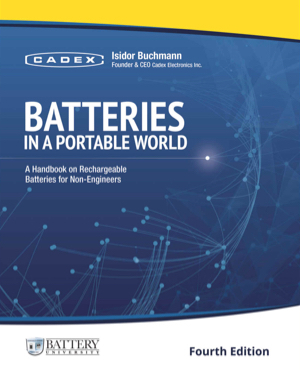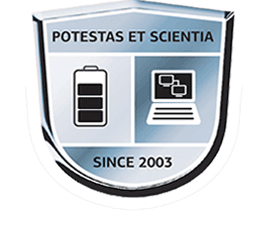Manufacturers are at a loss to explain why some cells develop high electrical leakage or a short while still new. The culprit might be foreign particles that contaminate the cells during fabrication, or rough-spots on the plates that damage the delicate separator. Clean rooms, improved quality control at the raw material level and minimal human handling during the manufacturing process have reduced the “mortality rate.”
Applying momentary high-current bursts to evaporate a short in a NiCd or NiMH cell has been tried, but this offers limited success. The short may temporarily vanish, but the damage in the separator remains. The repaired cell may begin to charge normally and reach the correct voltage, but high self-discharge will likely drain the battery quickly and the short will return.
It is not advised to replace a shorted cell in an aging pack as the new cells will always be stronger than the others. Consider the biblical verse, “No one sews a patch of unshrunk cloth on an old garment. If he does, the new piece will pull away from the old, making the tear worse.” (Mark 2:21) Replacing faulty cells often leads to battery failures within 6 months. It’s best not to disturb the cells but allow them to age naturally as an intact family. The exception is replacing a defective cell to salvage a well-functioning pack(See BU-302: Series and Parallel Battery Configurations also BU-910: How to Repair a Battery Pack)
Cobalt-blended Li-ion cells develop fewer leak and electrical shorts than nickel- and lead-based batteries but they can occur, especially with Li-phosphate. For unknown reasons, the cell at the positive end in a string is most likely to short first. Perhaps it gets the most stress while the middle cells enjoy some protection by being buffered.
The mandatory protection circuit for Li-ion packs can only shield the cell from over-voltage, excessive loading and reverse polarity. An electrical short caused by internal cell damage lies outside the safeguard of the protection circuit. Most cell failures occur when the battery has been damaged by shock and vibration, or has been overcharged or overheated. Charging at freezing temperatures can also damage Li-ion without indication of stress to the user. The Sony recall in 2006, when microscopic metal particles came into contact with other parts and the Boeing 787 Dreamliner that called for a redesign of the battery system are examples of when an internal short could not be prevented by a protection circuit. These were certified Li-ion batteries that developed an electrical short during service(See BU-304a: Safety Concerns with Li-ion)
To reduce the risk of an electrical short, Li-ion cells for electric powertrains and demanding industrial applications use a heavy-duty separator. These batteries are larger than those used in consumer products and also have a lower specific energy. Saying that Li-ion has twice the energy density of NiMH can inaccurate. Long-lasting Li-ion cells can have a specific energy as low as 60Wh/kg, which is similar to nickel-cadmium, while some consumer Li-ion can go up to 250Wh/kg.
| CAUTION | Applying a high current burst works best with nickel-based batteries. Do not use this method for lithium-ion cells. |


Can someone please point me to any references for the claim, "Cobalt-blended Li-ion cells develop fewer leak and electrical shorts than nickel- and lead-based batteries"?